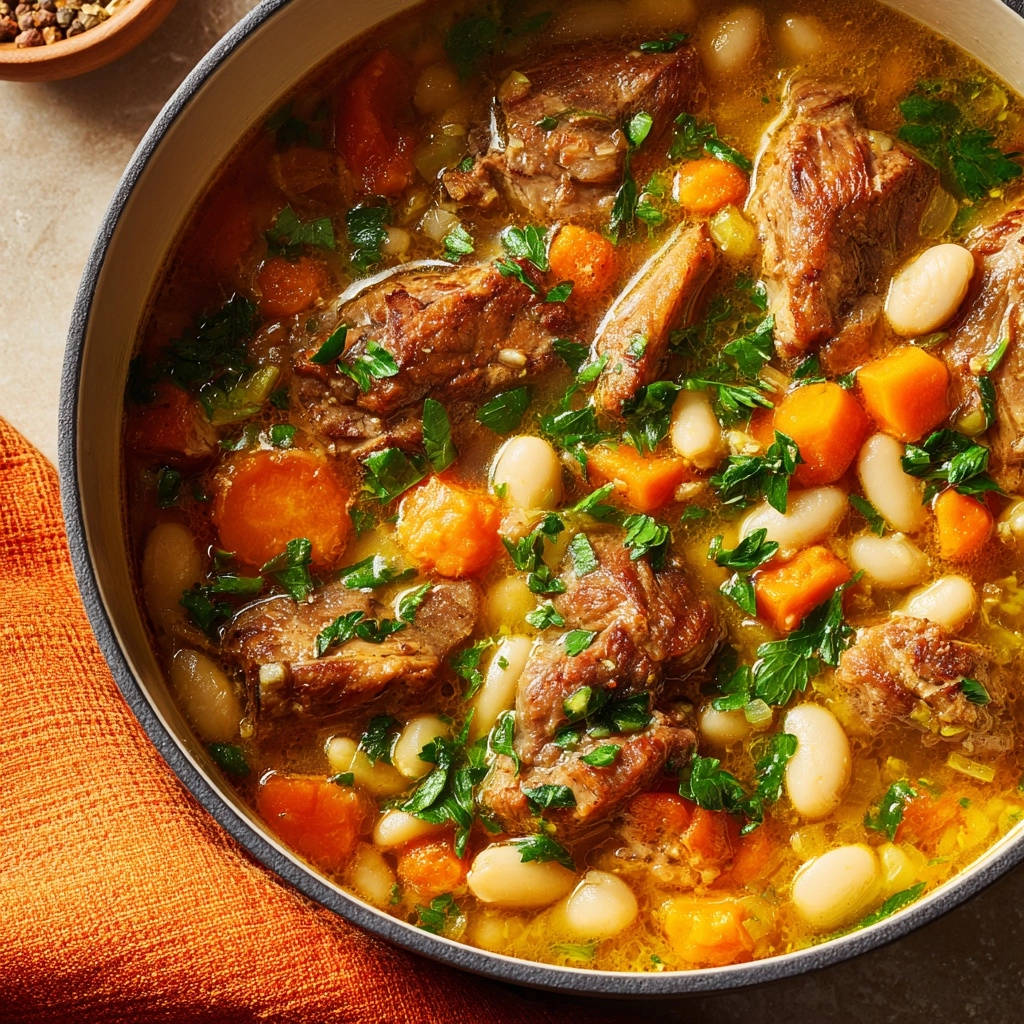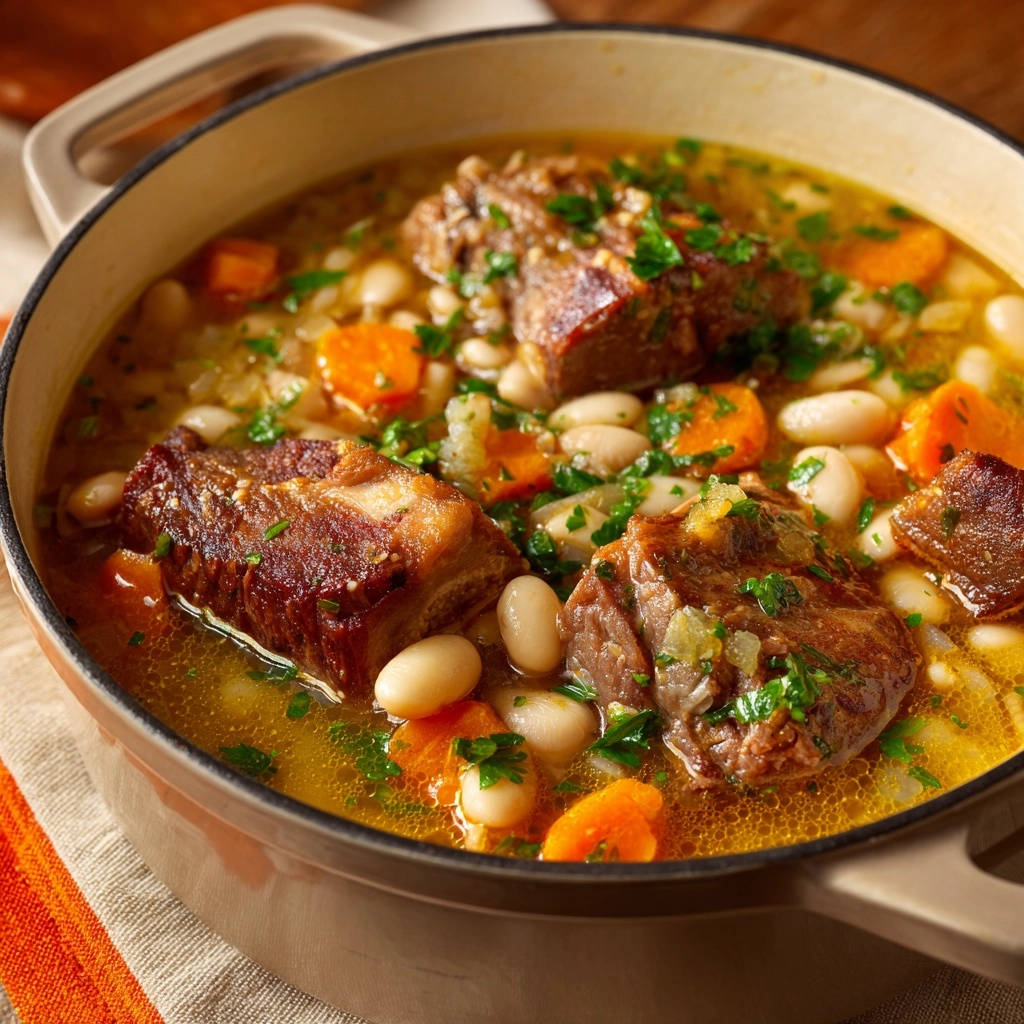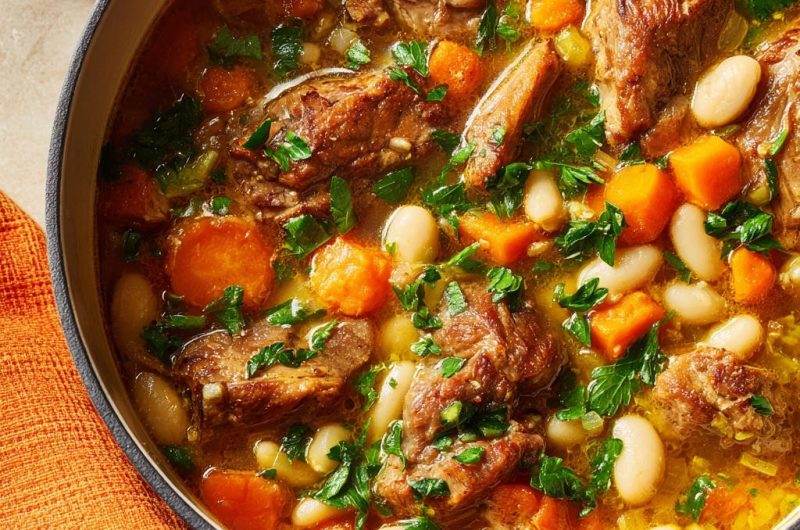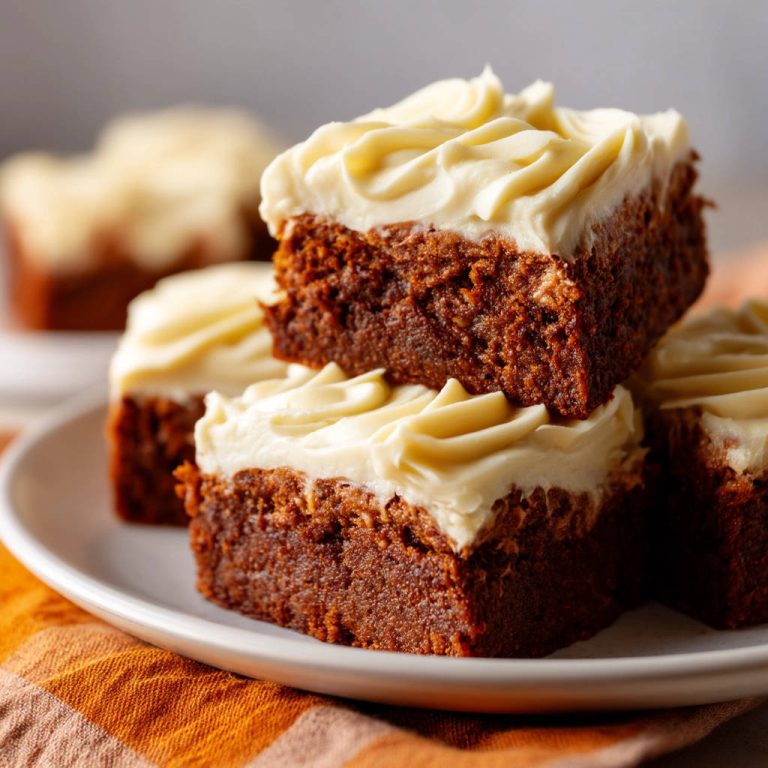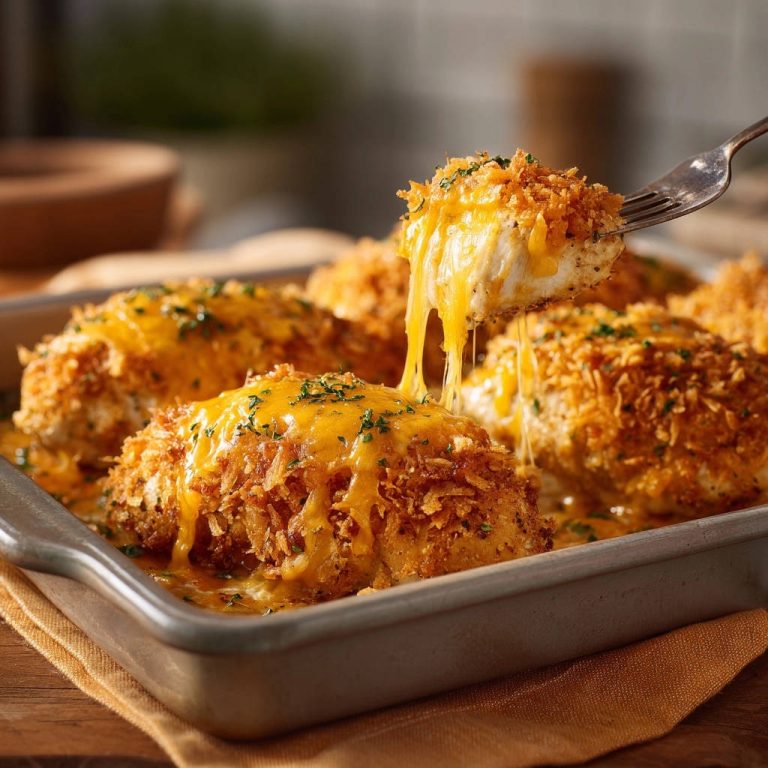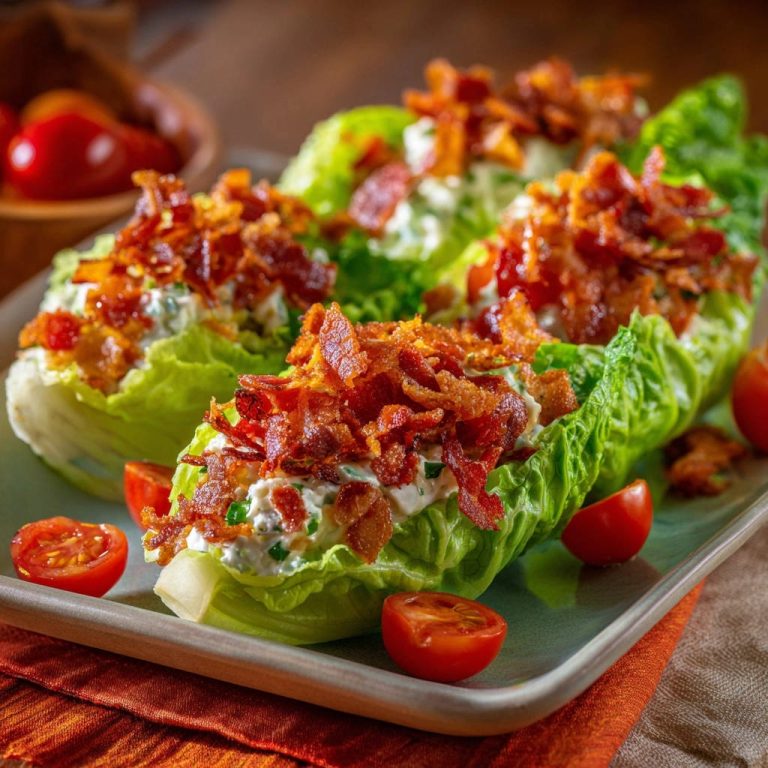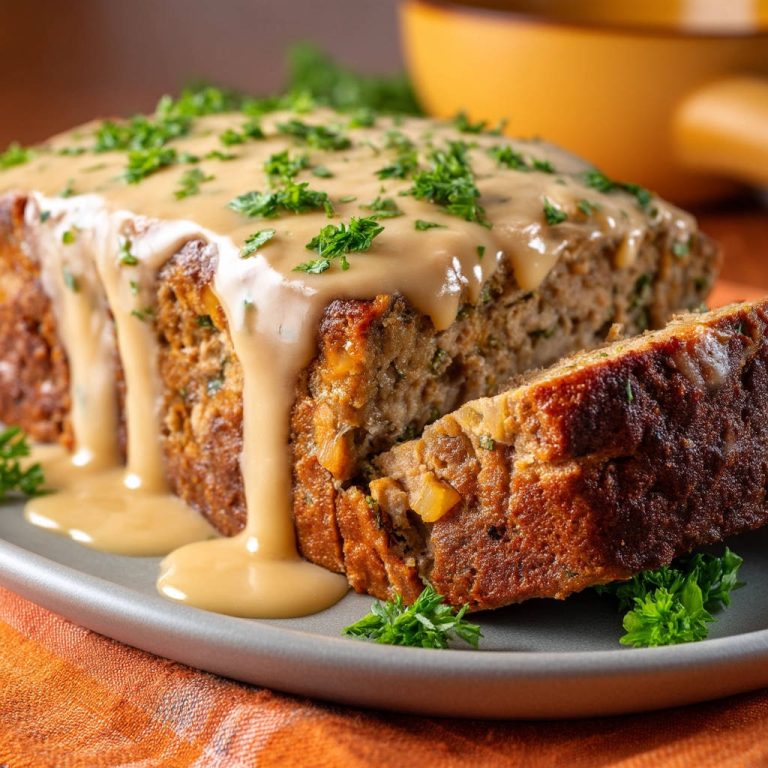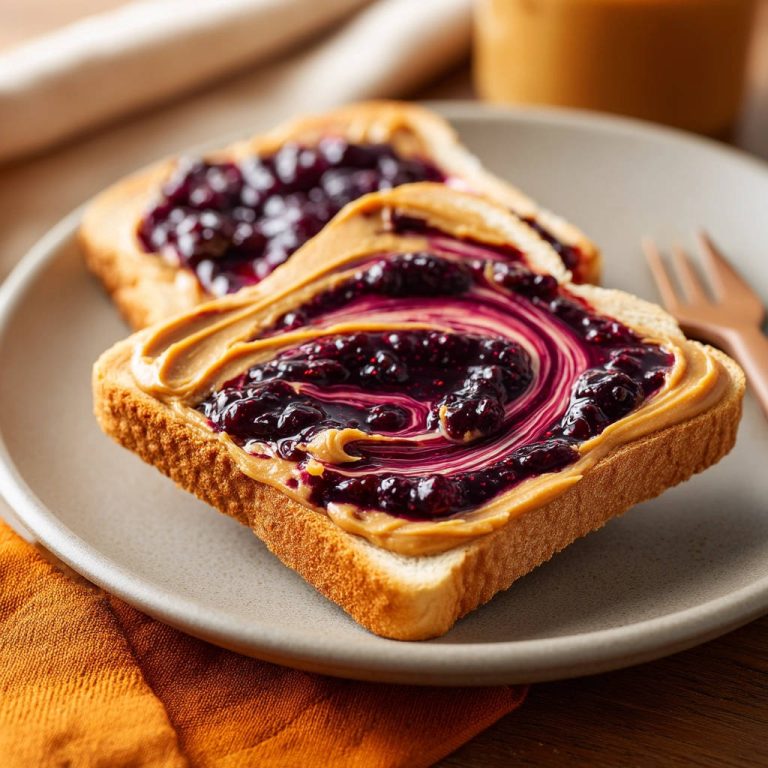There’s nothing quite like a hearty beef stew on a chilly evening, but I know the struggle of tough, chewy meat. It’s just plain disappointing when you expect that comforting, fall-apart texture from a Classic Beef & White Bean Stew.
Over the years, I’ve perfected a simple technique that ensures every single piece of beef in this recipe is melt-in-your-mouth tender, every single time. It’s truly a game changer for rich, comforting meals, and I can’t wait to share the secret to this ultimate tender beef stew with you.
Why Our Classic Beef & White Bean Stew is Unbeatably Tender
The “Secret” to Shreddable Beef, Guaranteed
The magic behind truly tender beef in a stew lies in a combination of thorough searing and an extended, low-and-slow braising process. We start by patting the beef meticulously dry, allowing for a deep, flavor-rich brown crust when seared.
This initial browning isn’t just for color; it’s a critical step that develops incredible depth of flavor. Then, a long, gentle simmer ensures the connective tissues in the beef break down slowly, transforming tough cuts into wonderfully succulent, shreddable bites.
A Comforting Meal, Perfected for Your Table
This Classic Beef & White Bean Stew is the epitome of comfort food, designed to warm you from the inside out. It’s a robust, flavorful dish that feels both indulgent and wholesome, making it perfect for family dinners or a cozy night in.
The rich broth, tender beef, and creamy white beans create a satisfying meal that everyone will love. It’s hearty without being overly heavy, providing a balanced and nourishing experience.
Quick Prep, Effortless Deep Flavor
Despite its rich, complex flavor, this beef and bean stew requires surprisingly little hands-on preparation. Most of the cooking time is completely hands-off as the stew gently simmers, allowing the flavors to meld and deepen on their own.
You’ll spend about 25 minutes actively preparing ingredients and getting the stew started, then let the pot do the rest of the work. This makes it an ideal choice for busy weeknights when you still crave a homemade, hearty meal.
Essential Building Blocks for Your Hearty Stew
The Star: Beef Chuck (And Why It Matters)
Beef chuck is the quintessential cut for any stew, including this Classic Beef & White Bean Stew, and for good reason. It’s a tougher cut, but it’s generously marbled with connective tissue.
During the long, slow cooking process, this tissue breaks down into gelatin, which not only tenderizes the beef but also enriches the stew’s broth with a silky, luxurious texture.
Aromatics & Herbs: The Flavor Foundation
Onions, carrots, and celery form the classic “mirepoix,” a fundamental aromatic base that builds the stew’s savory backbone. Sautéing them gently releases their sweet and earthy flavors, which infuse the entire dish.
Minced garlic adds a pungent, savory layer, while dried thyme contributes a warm, slightly earthy, and aromatic note that perfectly complements the beef.
The Liquid Gold: Broth & Beans
Using low-sodium beef broth is crucial, as it provides a deep, savory liquid foundation without oversalting the dish, allowing you to control the final seasoning precisely. The broth becomes the flavorful base for the tender beef.
Cannellini beans, with their creamy texture and mild flavor, are an excellent addition. They absorb the stew’s rich flavors beautifully, adding substance and a delightful creaminess that enhances the overall hearty stew experience.
Garnish & Finishing Touches
Fresh chopped parsley, added right before serving, is more than just a garnish; it adds a burst of freshness and vibrant color that brightens the entire dish. It provides a crisp, herbaceous contrast to the rich, savory flavors of the stew.
Equipping Your Kitchen for Stew Success
The Power of the Dutch Oven
A Dutch oven or a heavy-bottomed pot is your best friend when making this Classic Beef & White Bean Stew. Its thick walls and heavy lid ensure even heat distribution, which is essential for consistent searing and gentle, uniform braising.
This even heat prevents scorching and allows the beef to slowly become incredibly tender without drying out, ensuring every part of your stew cooks perfectly.
Essential Prep Tools
Beyond your main pot, you’ll need a sturdy cutting board and a sharp knife for safely and efficiently preparing your vegetables and beef.
Measuring cups and spoons ensure accurate seasoning and liquid amounts, while a reliable serving ladle will make dishing out your delicious, comforting beef stew a breeze.
Mastering the Method: Crafting Your Classic Beef & White Bean Stew
- Prepare the Beef for Tenderness:
Pat the beef cubes thoroughly dry with paper towels. This seemingly simple step is absolutely crucial for achieving a beautiful, deep brown sear, which locks in moisture and develops incredible flavor.
Season generously all over with salt and pepper immediately after patting dry, ensuring every piece of beef is ready for maximum flavor development.
- Sear the Beef in Batches:
Heat 1 tablespoon of olive oil in your large Dutch oven or heavy-bottomed pot over medium-high heat until it shimmers. Add about half of the beef cubes in a single layer, making sure not to overcrowd the pan; overcrowding steams the meat instead of searing it.
Sear each side for 3-4 minutes until deeply browned, developing a rich crust. This browning step adds immense flavor depth to your hearty beef stew. Remove the browned beef to a plate and repeat with the remaining beef, adding the second tablespoon of olive oil if needed to maintain proper searing temperature.
- Sauté the Vegetables:
Reduce the heat to medium in the same pot, allowing the residual heat to gently soften the vegetables. Add the chopped onion, carrots, and celery to the pot.
Cook, stirring occasionally, for 5-7 minutes until the vegetables begin to soften and become slightly translucent, creating the foundational flavor base for your stew.
- Infuse with Garlic & Thyme:
Stir in the minced garlic and dried thyme to the softened vegetables. Continue to cook for just another minute until the garlic becomes fragrant and the thyme releases its aromatic oils.
Be careful not to burn the garlic, as this can impart a bitter taste to your stew.
- Deglaze and Simmer:
Return all the seared beef, along with any accumulated juices from the plate, to the pot with the sautéed vegetables. Pour in the beef broth.
Bring the mixture to a gentle simmer, actively scraping up any browned bits from the bottom of the pot with a wooden spoon. These caramelized bits are packed with concentrated flavor, adding significant depth and richness to the broth.
- Braise for Ultimate Tenderness:
Once the stew is at a gentle simmer, reduce the heat to low, ensuring the liquid is just barely bubbling. Cover the pot tightly with its lid, creating a steamy environment, and let the stew gently braise for at least 1 hour and 45 minutes, or until the beef is incredibly tender and can be easily shredded with a fork.
Check occasionally to ensure it’s still simmering gently and add a splash more broth or water if it gets too thick or the liquid level drops too much. This long, slow cooking process is the absolute key to achieving truly tender, fall-apart beef in your Classic Beef & White Bean Stew.
- Add the White Beans:
After the beef has reached that desired tender consistency, add the rinsed and drained cannellini beans to the pot. Gently stir them into the stew.
Continue to simmer, uncovered, for another 15 minutes, allowing the flavors to meld beautifully and the beans to warm through completely, absorbing the delicious broth.
- Adjust Seasoning & Serve:
Taste the stew and adjust the seasoning if necessary, adding more salt or pepper to your preference. Remember that flavors deepen and concentrate during cooking.
Ladle the hot stew generously into bowls and garnish with fresh chopped parsley before serving for a vibrant finish.
Phase 1: Achieving That Perfect Sear
Phase 2: Building Layers of Aromatics
Phase 3: The Low & Slow Tenderness Process
Phase 4: Finishing Touches & Serving
Pro Tips for the Most Tender Classic Beef & White Bean Stew
Don’t Skip the Pat Dry & Sear
A perfectly dry surface on your beef is non-negotiable for achieving that coveted deep brown crust during searing. Moisture prevents browning, leading to grey, steamed meat.
This deep sear creates hundreds of flavor compounds that are essential for the rich taste of your beef and white bean stew, so take the extra minute to dry the beef well.
Simmering Low and Slow: The Patience Payoff
The biggest secret to melt-in-your-mouth beef is patience. Rushing the braising process by simmering too vigorously or not long enough will inevitably result in tough, chewy meat.
Maintain a very low, gentle simmer and trust the process; the long, slow cook allows the collagen to break down into tender, succulent fibers.
Flavor Boosters & Customization Ideas
For an even deeper, more complex flavor, consider adding a bay leaf during the braising process, removing it before serving. You can also customize by adding other hearty vegetables like diced potatoes, parsnips, or turnip rounds during the last hour of cooking.
If you enjoy a bit of warmth, a pinch of smoked paprika can add a wonderful, subtle smokiness to your Classic Beef & White Bean Stew.
Mastering the Seasoning
Always taste and adjust seasoning throughout the cooking process, particularly at the very end. Different broths and ingredients can vary in sodium content.
A final taste test allows you to balance the salt, pepper, and herbs, ensuring your beef and bean stew is perfectly seasoned to your liking before serving.
Common Questions & Quick Fixes for Your Stew
My Beef Isn’t Tender Enough!
If your beef is still tough after the recommended cooking time, don’t worry – it simply needs more time. Toughness means the connective tissues haven’t fully broken down yet.
Return the pot to low heat, ensuring it’s covered tightly, and continue to braise for another 30-60 minutes, checking every so often until the beef can be easily shredded with a fork. For more tips on achieving tender beef in other dishes, you might find our guide to tender beef and pepper stew helpful.
The Stew is Too Thin/Thick
If your stew is too thin, remove the lid for the last 15-30 minutes of simmering to allow some liquid to evaporate and the stew to naturally thicken. Alternatively, you can mix 1 tablespoon of cornstarch with 2 tablespoons of cold water, stir it into the simmering stew, and cook for a few minutes until it thickens.
If your stew is too thick, simply stir in additional beef broth or water, a quarter cup at a time, until it reaches your desired consistency.
Lackluster Flavor
If your stew tastes bland, it likely needs more seasoning. Add a pinch more salt and pepper, or a dash of your favorite savory seasoning blend. A splash of Worcestershire sauce can also add a significant umami boost.
Ensure you deglazed the pot thoroughly after searing the beef, as those browned bits are crucial for deep flavor. You can also stir in a tablespoon of tomato paste with your aromatics for extra richness.
Serving Your Stew & Making it Last
Perfect Pairings for a Hearty Meal
This Classic Beef & White Bean Stew is wonderfully satisfying on its own, but it truly shines when paired with a few simple accompaniments. A crusty loaf of artisanal bread is perfect for soaking up every last drop of the rich broth.
For a complete and comforting meal, serve it alongside fluffy mashed potatoes or a simple, crisp green salad with a light vinaigrette to cut through the richness.
Storing Leftovers Safely
Leftover Classic Beef & White Bean Stew tastes even better the next day as the flavors continue to meld! Allow the stew to cool completely before transferring it to airtight containers.
Store in the refrigerator for up to 3-4 days. Reheat gently on the stovetop or in the microwave, adding a splash of broth if needed to restore consistency.
Can You Freeze Classic Beef & White Bean Stew?
Absolutely! This beef stew freezes beautifully, making it an excellent meal prep option. Ensure the stew is completely cooled before transferring it to freezer-safe containers or heavy-duty freezer bags.
It can be stored in the freezer for up to 3 months. Thaw overnight in the refrigerator before reheating gently on the stovetop until piping hot.
Your Classic Beef & White Bean Stew Questions, Answered
What cut of beef is best for stew?
Beef chuck, also known as chuck roast or pot roast, is hands down the best cut for stew. Its marbling and connective tissue break down beautifully during long, slow cooking, yielding incredibly tender and flavorful results.
Other suitable options include beef round or brisket, but chuck remains the top choice for its consistent tenderness.
Can I make this stew in a slow cooker?
Yes, you absolutely can adapt this Classic Beef & White Bean Stew for a slow cooker. Follow the initial steps of searing the beef and sautéing the aromatics on the stovetop first, as these steps are crucial for flavor development.
Then, transfer everything to your slow cooker, add the broth, and cook on low for 6-8 hours or on high for 3-4 hours, until the beef is tender. Add the cannellini beans during the last 30-60 minutes of cooking.
Are there other bean options?
Yes, while cannellini beans are excellent for their creamy texture, you can certainly experiment with other white bean varieties. Great Northern beans, navy beans, or even a mix of white beans would work well in this hearty stew.
You can also explore other delicious white bean recipes, such as a comforting hearty white bean chicken stew, for different protein variations.
Can I add more vegetables to this stew?
Certainly! This Classic Beef & White Bean Stew is highly adaptable to incorporate more vegetables. Consider adding diced potatoes, parsnips, or sweet potatoes for extra heartiness, adding them along with the beef broth.
Softer vegetables like peas, corn, or green beans should be added during the last 15-20 minutes of simmering to prevent them from becoming mushy.
Embrace the Comfort: Your Classic Beef & White Bean Stew Awaits!
There’s a unique satisfaction that comes from serving a truly exceptional homemade stew, especially when you know it’s going to be perfectly tender every time. This Classic Beef & White Bean Stew is more than just a meal; it’s a comforting embrace for the whole family.
Gather your ingredients, take a deep breath, and trust this process. You’re about to create a dish that will become a cherished staple in your kitchen, bringing warmth and incredible flavor to your table.
Classic Beef & White Bean Stew
Course: Soups-StewsCuisine: American CuisineDifficulty: easy6
servings25
minutes2
hours120
minutesAmerican Cuisine
Ingredients
2 pounds beef chuck, cut into 1 1/2 inch cubes
2 tablespoons olive oil
1 large onion, chopped
2 carrots, peeled and chopped into 1/2 inch rounds
2 celery stalks, chopped
3 cloves garlic, minced
1 teaspoon dried thyme
1/2 teaspoon black pepper
1 teaspoon salt
4 cups beef broth, low sodium
1 can (15 ounces) cannellini beans, rinsed and drained
1/4 cup fresh parsley, chopped, for garnish
Directions
- Prepare the Beef for Tenderness: Pat the beef cubes thoroughly dry with paper towels. This is a crucial step for achieving a beautiful sear and locking in moisture. Season generously all over with salt and pepper.
- Heat 1 tablespoon of olive oil in a large Dutch oven or heavy-bottomed pot over medium-high heat until shimmering. Add half of the beef in a single layer, ensuring not to overcrowd the pan. Sear for 3-4 minutes per side until deeply browned on all surfaces. This browning step adds immense flavor depth. Remove the browned beef to a plate and repeat with the remaining beef, adding the second tablespoon of olive oil if needed.
- Reduce the heat to medium. Add the chopped onion, carrots, and celery to the pot. Cook, stirring occasionally, for 5-7 minutes until the vegetables begin to soften.
- Stir in the minced garlic and dried thyme. Cook for another minute until fragrant.
- Return all the seared beef to the pot. Pour in the beef broth. Bring the mixture to a gentle simmer, scraping up any browned bits from the bottom of the pot. These bits are full of flavor and will contribute to the rich broth.
- Once simmering, reduce the heat to low, cover the pot tightly, and let the stew gently braise for at least 1 hour and 45 minutes, or until the beef is incredibly tender and can be easily shredded with a fork. Checking occasionally to ensure it’s still simmering gently and adding a splash more broth or water if it gets too thick. This long, slow cooking process is the key to truly tender meat.
- After the beef is tender, add the rinsed and drained cannellini beans to the pot. Continue to simmer, uncovered, for another 15 minutes, allowing the flavors to meld and the beans to warm through.
- Taste and adjust seasoning if necessary. Ladle the hot stew into bowls and garnish generously with fresh chopped parsley before serving.

